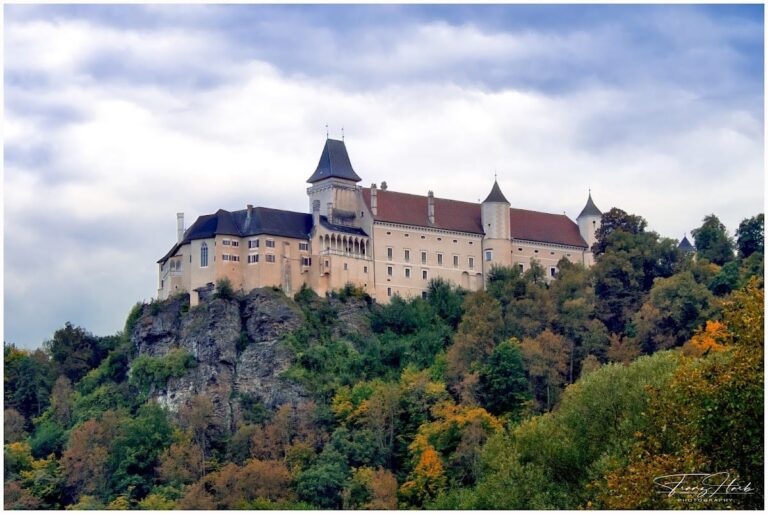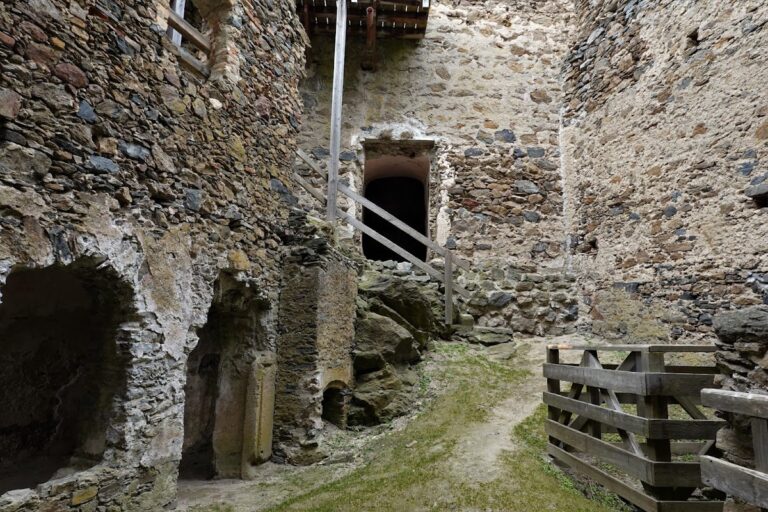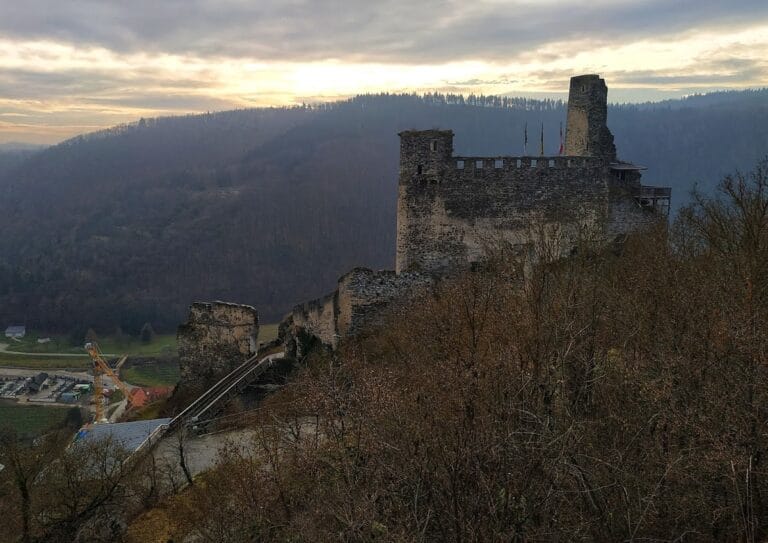Burgruine Schimmelsprung: A Medieval Castle Ruin in Gars am Kamp, Austria
Visitor Information
Google Rating: 4.9
Popularity: Very Low
Google Maps: View on Google Maps
Official Website: wikip.one
Country: Austria
Civilization: Unclassified
Remains: Military
History
Burgruine Schimmelsprung is situated in the municipality of Gars am Kamp in Austria. It was established by the ministerial family von Thunau, also recorded as Thumbenove, and first appears in written records dating back to 1196.
During the medieval period, the castle served as the administrative seat for the von Thunau family. Over time, it became an important local fortress, overseeing the surrounding lands near the Kamp River. However, by the late 14th century, the castle experienced a decline and was eventually abandoned. The ruin was not restored after its destruction, which marked the end of its active use.
Local folklore has contributed significantly to the castle’s identity. The name “Schimmelsprung” derives from legends recounting a dark chapter in the castle’s history. According to these stories, the lord of the castle, variously described either as a Templar knight or a robber baron, was known for harsh treatment of his peasants. During a siege led by the oppressed local population, the lord reportedly tried to flee the fortress by leaping from the cliff riding his horse, a desperate act that resulted in his death. This dramatic event is said to have led to the castle’s ruin, which remains unrepaired to this day.
Remains
The site of Burgruine Schimmelsprung occupies a rocky outcrop positioned roughly 100 meters above the right bank of the Kamp River. Its natural location is imposing, with steep cliffs on three sides plunging straight down to the river below, offering defensive advantages.
Access to the castle was strategically arranged from the west, where three successive defensive ditches, comparable to moats, provided protection. The castle was enclosed by a curtain wall in an approximate square layout, securing the entire site.
At the western corner of the enclosure stood the bergfried, the castle’s main tower used primarily for defense and observation. Today, visitors can still see parts of this tower’s vaulted basement (referred to as a tonnengewölbtes Untergeschoß, meaning a cellar with a barrel vault).
Along the side facing the Kamp River remains a large portion of the curtain wall. This wall includes preserved arrow slits, narrow vertical openings designed to allow defenders to shoot arrows while staying protected. Other sections of the wall incorporate passages, the outlines of which remain visible, providing insight into the castle’s original internal layout.
Together, these surviving features provide a clear sense of Burgruine Schimmelsprung’s overall design and construction, while also reflecting its historical role as a fortress perched defensively above the river.







